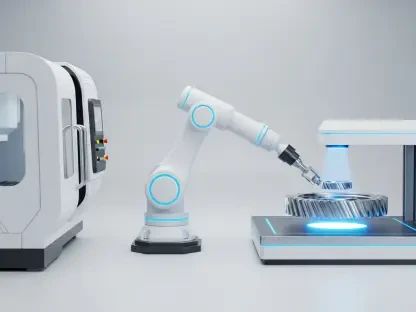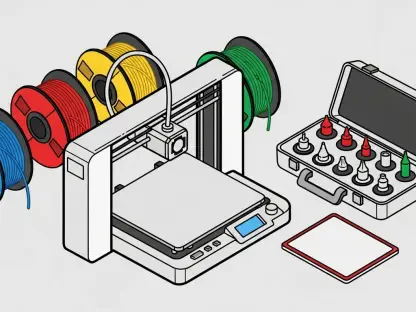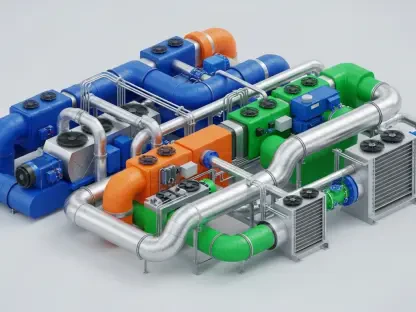The landscape of power plant automation is undergoing a seismic shift as the industry transitions from reliance on multiple disparate control systems to a unified Distributed Control System (DCS) platform. This transformation, driven by the demand for greater operational efficiency, reduced costs, and enhanced reliability, marks a pivotal moment for power generation. It catalyzes the streamlining of complex processes and the reduction of operational redundancies that have historically burdened the industry. The advances made by companies such as Dow Chemical showcase the potential of unifying control systems to create seamless, integrated operations that not only improve consistency but also enhance employee satisfaction by simplifying interaction with technology.
The Evolution from MOD Systems to Unified DCS
The evolution towards a singular DCS platform reflects broader industrial changes driven by technological advancements and strategic foresight. Historically, companies like Dow Chemical pioneered process automation with their Manufacturing Operating Discipline (MOD) systems in the late 1960s, which progressed into the MOD5 across subsequent decades. This legacy of innovation underscores the foundational principles of state-based control and architecture grounded in in-house engineering. As the new millennium ushered in sophisticated technological tools, Dow Chemical shifted towards commercial DCS systems, embracing modern solutions while retaining the robust principles established by MOD5.
Transitioning from traditional systems to a unified DCS platform offers myriad advantages. The integration simplifies operations by allowing different plant components, such as steam turbines and other critical machinery, to be managed within the same system. This not only streamlines communication but ensures more reliable efficiencies. The synergy of harmonized systems reduces risks associated with cross-platform communication errors, which have historically led to operational inefficiencies and unexpected downtimes, sometimes culminating in costly delays or safety concerns. This strategic shift represents a broader trend in the industry to consolidate diverse processes under a single, cohesive framework to augment reliability and cost-effectiveness.
Ethylene Production: A Case in Point
A significant case study showcasing the power of DCS unification is Dow Chemical’s ethylene production process, which stands among the world’s leading producers using steam crackers. Traditionally, steam turbines integral to this process were managed using Programmable Logic Controllers (PLCs), separate from the ethylene production’s Distributed Control System. However, this separation often resulted in communication breakdowns, impacting reliability and significantly increasing operational costs. Consolidating these steam turbines within the ethylene production’s DCS resulted in marked improvements in reliability, reduced costs, and substantially enhanced uptime.
The integration of steam turbines within the common DCS framework eliminated the disruptive communication disparities previously encountered. This transition not only ensured smoother operations but also facilitated faster response times to any potential system failures. Removing the redundancy associated with managing multiple platforms allowed for long-term planning, unveiling cost-saving opportunities. Furthermore, the value of real-time data collection, when managed under a single umbrella, empowered operators to predict and preemptively address potential issues, thereby safeguarding the continuous production flow.
The Future Look of Power Plant Automation
The notion of centralizing power plant automation via a unified DCS platform introduces transformative prospects for industrial operations. Today, power plants often rely on multiple automation systems to manage diverse components such as gas turbines, steam turbines, and balance of plant systems. This decentralized approach contributes to complexities and reliability concerns, necessitating a shift towards a comprehensive, singular system. This unification offers an opportunity to streamline operations, reduce associated costs, and promote enhanced employee focus as they no longer divide attention between disparate platforms, ultimately driving satisfaction and retention.
Transitioning to an all-encompassing DCS is, however, a substantial commitment requiring strategic vision and careful execution. It mandates selecting suitable platforms, implementing step-by-step integration plans, and assessing long-term sustainability. Leaders must ensure open communication while onboarding and rallying a skilled workforce to manage the unified systems efficiently. The path to such transition spans decades, emphasizing methodical planning that supports businesses in reclaiming operational control while future-proofing their infrastructure against evolving technological demands.
Financial Implications and Strategic Planning
Financial prudence stands at the core of transitioning to a unified DCS platform, as companies are increasingly aware of the economic benefits. Reducing costs tied to unexpected events is one of the immediate advantages, as minimized communication errors result in fewer downtimes and optimally maintained production schedules. Selecting strategic DCS platforms can significantly shift capital expenditure proficiencies, allowing organizations to leverage technological tools to sustain continuous improvement. Integrating simulation capabilities with a unified system offers substantial savings by allowing for process optimization, troubleshooting, and workforce training without halting operations.
Additionally, establishing a clear standardization vision involves transparent communication of future goals, helping align leadership with core operational objectives. Such a vision fosters a professional environment where automation careers flourish, encouraging employees to strengthen their expertise within this consolidated framework. Investing in career development becomes a critical step in ensuring that knowledge gained in one area can promote breakthroughs across all levels of an organization, enhancing overall productivity and creating a competitive edge in evolving industrial landscapes.
Streamlining for Efficiency and Simplification
Simplification and efficiency are not merely buzzwords but essential pathways for industries aiming to foster sustainable growth. The trend of migrating towards a single-platform DCS reflects a deep-seated desire to simplify operations, maintain quality assurance across all levels, and minimize unnecessary costs. Companies must responsibly manage economic factors with efficiency gains, ensuring initial investments translate into long-term savings. Within this environment, empowering professionals with the skills and growth opportunities they need ensures ongoing motivation to contribute to these industry shifts.
The push towards a standardized platform necessitates attention to choosing the right system capable of seamlessly supporting complex machinery while contributing to improved outcomes. Ensuring alignment with broader digitalization strategies places these platforms at the forefront of strategic initiatives aimed at maintaining robust growth. Businesses are better prepared to navigate market demands and unpredictable conditions when deploying such advanced methodologies, arming themselves with the flexibility and resilience they need to stay competitive.
Unlocking Potential Through Single-Platform Solutions
A centralized automation platform can initiate manifold improvements that reinforce company growth dynamics. Among them is the potential to harness sustainable operational simulations, essential for optimizing processes and ensuring continuous improvement. This innovative approach allows for seamless startups without interruption, thus fortifying plant resilience in dynamic conditions. Companies investing in honing their in-house expertise can accelerate global deployments, utilizing local success stories to inform international aspirations and amplify competitive stature.
By opting to unify automation processes into a singular system, industries open the door to more manageable structures that bolster talent retention efforts and facilitate training. Employees navigate unified frameworks with ease, mastering consistent operations and broadening capabilities transferable across various areas. As knowledge is effectively shared and expanded throughout the company, operations become increasingly resilient to change, adaptable in evolving scenarios, and unyielding in operational precision, delivering value to businesses and their stakeholders.
Forward-Thinking Conclusions and Strategic Considerations
The power plant automation sector is experiencing a significant evolution as it shifts from multiple, fragmented control systems to a unified Distributed Control System (DCS) platform. This change is driven by the industry’s quest for enhanced operational efficiency, reduced costs, and improved reliability, marking a crucial turning point in power generation. By adopting a DCS, power plants can streamline complex processes and eliminate operational redundancies that have traditionally bogged down the industry. This transition reflects a broader trend towards modernization and integration in industrial operations.
Companies like Dow Chemical illustrate the transformative impact of consolidating control systems. By creating seamless, integrated operations, they not only boost process consistency but also enhance employee satisfaction. This is achieved by simplifying interactions with technology, making it easier and more intuitive for employees to engage with the systems they use daily.
The move toward a unified DCS platform represents a significant technological advance that holds promise for improving the overall efficiency and efficacy of power plants. As the industry embraces these changes, the benefits extend beyond just technical advancements—they also encompass better workforce engagement and satisfaction. This unified approach sets a new standard for the industry, showing that modernization can lead to both operational improvements and a more motivated workforce.









